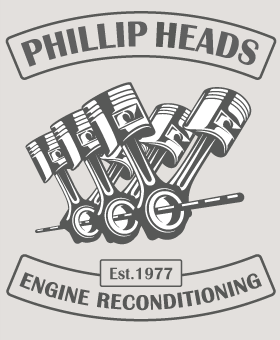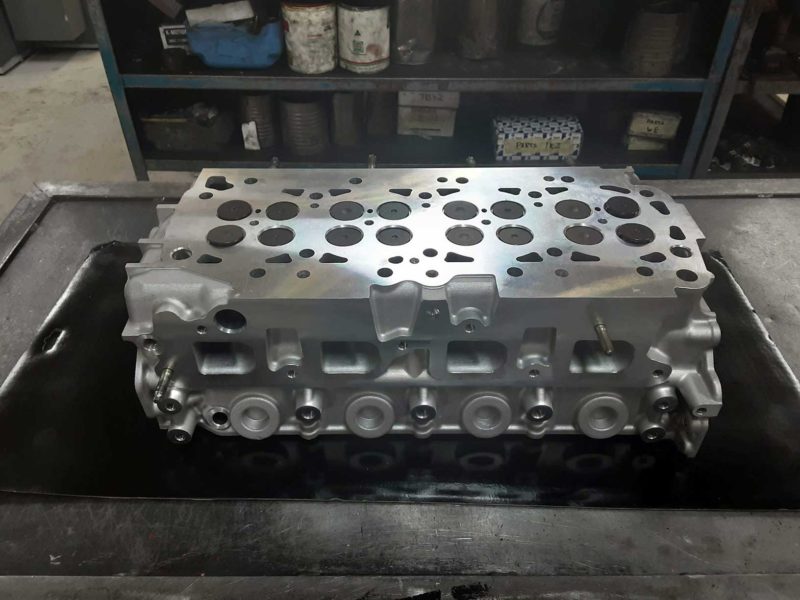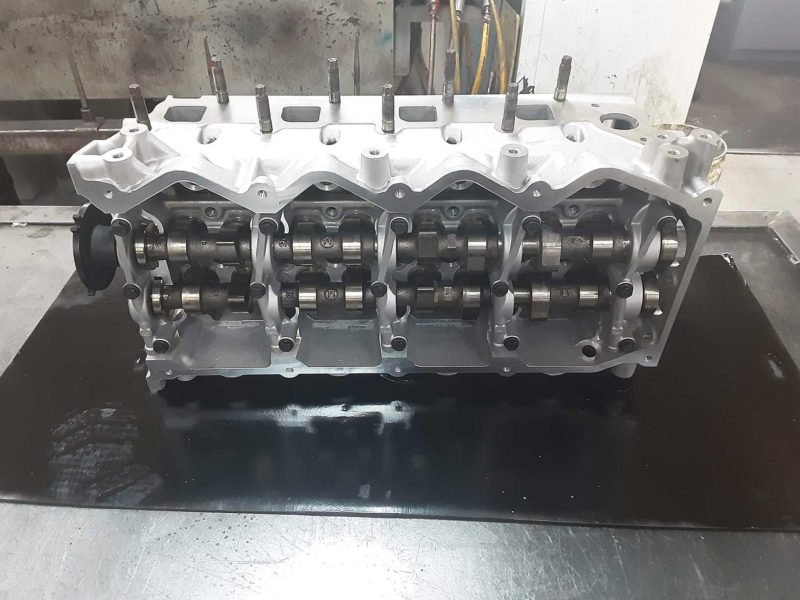Cylinder Head Reconditioning
One of the most critical components in an engine rebuild or upgrade is the cylinder head.
Camshafts, carburettors, and exhaust systems are easy ways to improve the air and fuel flow into and out of an engine. Whilst replacing or upgrading these components will enhance performance, it’s the cylinder head that will limit the amount of air that can flow into and out of the engine.
Attempts to increase power without considering the cylinder head usually don’t end well. Getting the cylinder head performing correctly with other components offers the most significant potential for increased power and efficiency and is particularly important with vintage or muscle cars.
A well-performing cylinder head also helps prevent fuel wastage or damage by partially burnt air/fuel mixture.
So, no matter what you bolt on to increase power and performance, you must ensure the cylinder head is up for the task. Otherwise, you won’t get optimal performance out of the other components.
Should you recondition or buy a new cylinder head?
The three main reasons to consider reconditioning your cylinder head rather than buying a new one are:
- Availability – getting a new cylinder head for older model engines is impossible for some vintage vehicles as they’re just not being produced anymore. Even engines that are only 20-30 years old. In the rare case that your cylinder head can’t be repaired, you can usually find a donor head for reconditioning.
- Cost savings – the cost of reconditioning a cylinder head is considerably cheaper than buying a new one. Most cylinder heads can be repaired, and it could be that only a few components are damaged.
- Performance – as mentioned above, improving your cylinder head’s airflow, fuel burn, compression, and strength can offer the best way to increase power and performance. Matching these to suit your camshaft, carburettors and exhaust system is essential to ensure you get the most out of your engine.
What is cylinder head reconditioning?
Cylinder head reconditioning gives your existing head a new lease of life and brings it back to its original or better condition. It involves welding cracks, machining any warps, and reseating, fixing, or replacing failed valve train components.
Cylinder heads may need reconditioning due to overheating, causing them to be blown or cracked. Components such as valve seals, valve guides, and other replaceable cylinder head parts may just be worn out over time.
Reconditioning a cylinder head may include some of the following processes: milling the head flat to allow a proper seal and produce the desired compression ratio, checking and installing the valves, springs, seals, retainers and locks, reseating valves, removing and installing valve guides; reaming the guides to the proper size, removing the soft plugs and checking coolant tubes, checking the ports ensuring a good valve to seat seal.
The cylinder head reconditioning process.
The reconditioning process essentially involves disassembling, cleaning, inspecting, and replacing various components, along with machining out any warps and imperfections on the head and/or valve train.
Cleaning – This involves removing any carbon sludge deposits from both outside and inside the cylinder head and ensuring to scrape off any residual gasket and flush the oil and coolant passageways. The head may also be bead blasted and usually put through a chemical wash.
Inspect the cylinder head – Once clean, the cylinder head is ready to be inspected. We check for cracks, pits, worn parts and inspect valve guides, rocker arms, studs, and other components for excessive wear. Once the cylinder head has been inspected, we will know what parts need replacing and associated costs.
Machining and resurfacing – If your cylinder head is cracked, it will need welding and checking for warping. A special resurfacing mill is used to restore the head’s flatness, remove pits and deposits, weld joints and improve the surface finish. The head can also be milled to increase the compression ratio by reducing the effective cylinder height. Valve seats will need to be checked and may need machining and/or replacing.
Replacing cylinder head parts and assembly – After the cylinder head has been machined and checked, it is reassembled, ensuring all new and reconditioned components are installed to the correct specifications.
Cylinder head reconditioning is our specialty.
Cylinder heads are the most common component we see in our workshop and something we are experts in. We pride ourselves in delivering quality workmanship and, with over 45 years in the business, modestly consider ourselves one of the best workshops in Australia.
Our team can take care of all your needs, to list a few below:
- Chemical cleaning and bead blasting.
- Crack welding and pressure testing.
- Replacement of valve guides and seats and inserts.
- Valve resurfacing and seat machining.
- Injector tube replacement and seat cutting where required.
- Thread repairs and removal of damaged bolts or studs.
- Resurfacing of the inlet and exhaust manifold faces.
- Manifold repairs and resurfacing.
- Replacement of overhead cam bearings.



